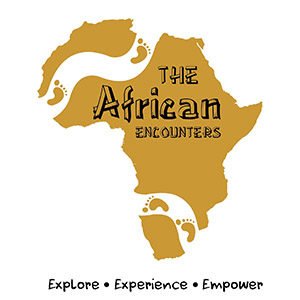THE KARAMAJONG PEOPLE OF UGANDA
The Karamajong people are an ethnic community indigenous to the Karamoja region, residing in districts such as Kaabong, Kotido, Amudat, Napak, Moroto, Abim, and Nakapiripirit in Uganda. Their traditional homesteads, known as Manyattas, dot the northeastern landscape, offering a glimpse into their rich cultural heritage.
Whereas Uganda is one of the world's most cultural diverse countries, with more than 50 different tribes, the Karamajongs are one of those outstanding tribes that never miss on a list for cultural safaris in Uganda. Their unique traditions, beliefs and practices, just make them one of the reason Uganda is indeed called the Pearl of Africa.
Most travelers to Uganda face a hard time deciding on which tribes cultures to explore while on a Uganda Safari, simply because the country has alot to offer in terms of culture. This article takes you on a virtual tour of the Karamajong people of Uganda, quickening your decision to book that safari with us.
History and Diversity of the Karamojong People
Comprising of 13 different tribes, the Karamajongs trace their origins to the Nilotics migration. Notably, four main groups—the Matheniko of Moroto, the Bokora of Napak, the Nyakai in the eastern Abim, and the Pemba—uphold the distinct identity of the typical Karamojong. Their steadfast commitment to traditional ways of life has led some to label them as 'primitive,' a term that overlooks the resilience and uniqueness of their cultural practices.
Other tribes under the Karamjongs are the Pokots, Jie, Turkana, IK people, Dodoth and so may others. A true cultural safari in Uganda wouldn't be complete without exploring the distinct traditions of the Karamajongs, adding a unique flavor to the country's cultural diversity
Cattle Herding as a Way of Life
Cattle herding is a cornerstone of the Karamojong people's cultural beliefs. Boasting 20% of Uganda's cattle, the Karamoja region relies on these animals for milk and blood, integral components of their diet. In the eyes of the Karamajong people, cattle still remains not just a possession but a symbolic embodiment of wealth, serving as the primary component of dowry. In this region, the age-old adage holds true: "No cattle, no wife," underlining the profound cultural significance attached to these animals in the context of marriage and prosperity
Facing a challenging arid climate for about 3-4 months each year, the Karamajongs undertake seasonal migrations to nearby villages in search of pasture and water, showcasing their deep connection to their livelihood. This has been their way of life, actually some tales stipulate that searching for pasture and water got them reach Uganda, however they decided to settle then.
Raiding and tribal Conflicts is their Complex Reality
The Karamajongs, known for their cattle riding skills, engage in cattle raids across borders, leading to conflicts with neighboring communities in Kenya, South Sudan, and other parts of Uganda. Their actions, rooted in their dependence on cattle, have sometimes forced them into cross-border conflicts, highlighting the intricate relationship between their traditional lifestyle and geopolitical dynamics. However, with the tight security the government of Uganda has placed the Karamoja region, its currently one of the most peaceful areas you will ever visit in Uganda.
Subsistence Farming in the Karamoja region
In the Karamoja region, crop cultivation, mainly rain-fed, revolves around staple crops like sorghum and maize. The challenging terrain demands cultivation in areas with relatively fertile soils. Beyond the staples, other crops such as sweet potatoes, cassava, groundnuts, and various vegetables contribute to the Karamojong people's subsistence.
This desire to settle stemmed from years of constant movement in search of water and pasture. The Karamajongs, feeling the need to end this nomadic lifestyle, found a solution: growing maize and sorghum. To combat hunger throughout the year, they adapted to cultivating these crops. If you've ever tasted maize, whether roasted or boiled, you're in for a treat with the Karamajongs' unique way of preparing it. Their method is entirely different but undeniably delicious
Expressing Tradition through Dance and drama
The traditional dance of the Karamojong is a captivating spectacle, featuring dancers with unique hairstyles, swaying high without touching the ground. The local people showcase the vibrancy and energy of the Karamojong people through rhythmic dances, a celebration of their cultural identity.
Watching them jump high as they perform seems easy until its your turn to try on these dance strokes. For men who jump the highest are considered to be the most handsome, and this an act of enticing young girls to crush on you. So if you are a high jumper, it could be yet time for you win yourself a Karamajong girl. The skits presented typically portray their traditional way of life, how they used to hunt, adulthood initiation and food preparation among others.
Artistic Expressions and Indigenous Crafts
Local arts and crafts play a significant role in the Karamojong culture. Strong men adept at crafting produce beautiful calabashes, baskets, bows, arrows, pottery, shoes and wood carvings. These creations, made with precision and adorned with unique patterns, reflect the artistic prowess of the Karamojong people. The ladies are able to craft their own necklaces, earrings and bracelets. Oftenly they sell these products to let you travel back home with real feel of Karamoja region.
These exceptional crafts are so uniquely crafted that embarking on a quest to find similar ones elsewhere, outside the Karamoja region, would likely take an extensive six months without guarantee of success
Traditional Living: Manyattas, Dressing, and Daily Work
Karamojongs live in traditional dwellings known as Manyattas, constructed from grass, mud, and dung. The family manyattas are usually strongly fenced with thorn trees characterized with very short gates, as their protection mechanism. To the Karamajongs, they believe by the time an enemy will squeeze himself into the tiny gate, they will have heard him already.
Their distinct ways of dressing include blanket-like shawls with vibrant colors for men, with toe-curved sandals made of car tyre waste. Men are still usually found with a red or green hat, perhaps to protect them from the sun, carrying their cattle herding sticks; now that is a typical K'jong man.
Women are celebrated for their intricate beadwork, embellishing themselves with vibrant beads and distinctive "kiswahili" hairstyles. Despite their apparent simplicity, it's the genuine allure of these adornments that captivates, often prompting men to bend the knee in admiration, a gesture symbolic of their intent for marriage with these young women.
Work and Social Structure
Work among the Karamojongs is divided based on age, gender, and status within the Manyattas. Children assist elders with household chores, with girls taking on responsibilities like caring for young ones and participating in hut building. Boys contribute by herding goats and cattle, cleaning kraals, and engaging in other vital activities.
The Karamoja cattle exhibit their most breathtaking allure either during the early morning hours as they gracefully emerge from the kraals or in the evening when they are gently ushered back inside. The beautiful backdrop of the sunrise or sunset adds a picturesque dimension, elevating each moment to a visual spectacle that is truly worth capturing
If you are planning a Uganda Cultural safari to the Karamoja region, or a combined South Sudan and Uganda Tour, be sure of encountering not just a geographical landscape but a living tapestry of the Karamojong people's cultural richness and resilience, where tradition and modernity coexist in harmony.
And when it gets to outstanding cultural tours, we are the best tour operator you can ever get, giving the "I wouldn't have gotten better" experiences.





